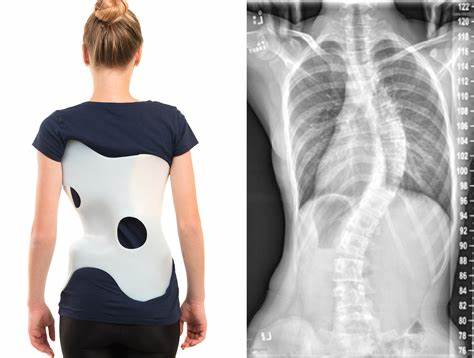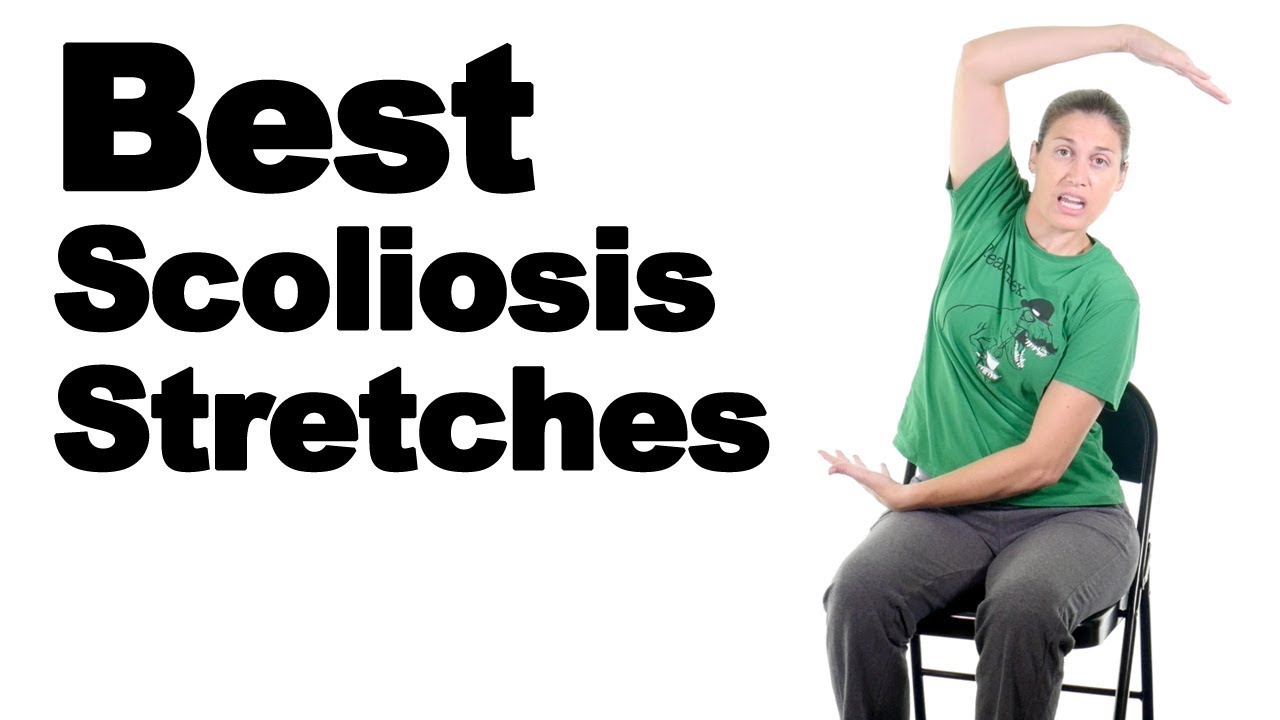Scoliosis is characterized by an abnormal curvature of the spine that can cause pain and discomfort. This condition may develop during childhood or adolescence and can worsen over time if untreated. The exact cause of scoliosis is often unknown but can be influenced by genetics, muscle imbalances, and neuromuscular conditions. Common symptoms include an uneven waistline, asymmetry in shoulders or hips, and back pain. Scoliosis can be classified into several types:
- Idiopathische Skoliose: The most common type, with no known cause.
- Kongenitale Skoliose: Present at birth due to spinal abnormalities.
- Neuromuskuläre Skoliose: Caused by underlying conditions such as cerebral palsy or muscular dystrophy.

The Importance of Early Diagnosis and Intervention
Early diagnosis and intervention are critical for managing scoliosis effectively. Identifying the condition at an early stage allows for conservative treatments and can prevent progression. Regular screenings, especially during adolescence, are important as scoliosis tends to advance during growth spurts. Early intervention may involve physical therapy, bracing, and tailored exercise programs. Consulting a healthcare professional at the onset of symptoms ensures timely and appropriate care.
Non-Surgical Approaches for Managing Scoliosis Pain
Non-surgical treatments are typically the first line of defense for managing scoliosis pain, focusing on pain reduction, posture improvement, and mobility enhancement. Key non-surgical approaches include:
- Physikalische Therapie: Essential for strengthening the spinal-supporting muscles and improving flexibility. Techniques may include manual therapy, stretching exercises, and postural correction.
- Chiropractic Care, Acupuncture, and Massage Therapy: These can help relieve muscle tension and promote relaxation.

Physical Therapy and Exercise Techniques for Pain Relief
Physical therapy and exercise play crucial roles in scoliosis pain management. Effective exercises may include:
- Stretching Exercises: To improve flexibility and relieve muscle tightness.
- Strengthening Exercises: Targeting spinal-supporting muscles to enhance stability and reduce pain.
- Stabilization Exercises: Focusing on core strength to maintain proper spinal alignment and reduce discomfort.
The Role of Bracing in Scoliosis Pain Management
Bracing is recommended for individuals with moderate to severe scoliosis to prevent further curvature progression and alleviate pain. Custom-made braces are worn for several hours daily to guide the spine into a more aligned position. Bracing is most effective during adolescence when the spine is still growing. The specific type and duration of bracing depend on curvature severity and the individual’s age.

Medications and Pain Relief Options for Scoliosis Patients
Medications can help manage scoliosis-related pain, including:
- Nichtsteroidale entzündungshemmende Medikamente (NSAIDs): Such as ibuprofen or naproxen to reduce inflammation and pain.
- Muskelrelaxantien: To alleviate muscle spasms.
- Stronger Pain Medications: May be prescribed for severe pain under professional guidance.
- Topical Creams or Patches: Containing lidocaine or capsaicin for localized relief.
Complementary and Alternative Therapies for Alleviating Scoliosis Pain
Complementary therapies can enhance traditional treatments by addressing physical, emotional, and psychological aspects of pain management. Options include:
- Acupuncture, Chiropractic Care, and Massage Therapy: To reduce muscle tension and improve relaxation.
- Mind-Body Practices: Such as yoga and meditation to manage stress, improve posture, and enhance overall well-being.
Surgical Interventions for Severe Scoliosis Pain
In severe cases, where pain is debilitating or curvature is rapidly progressing, surgery may be necessary. The most common procedure is spinal fusion, where vertebrae are fused using bone grafts and metal rods or screws to straighten the spine and prevent further curvature. Surgery is typically considered when non-surgical options have been exhausted.
Lifestyle Modifications to Reduce Scoliosis Pain
Lifestyle changes can help alleviate scoliosis pain and improve quality of life. These include:
- Maintaining a Healthy Weight: To reduce strain on the spine.
- Engaging in Regular Physical Activity: Low-impact exercises like swimming or walking to strengthen spinal muscles and improve posture.
- Practicing Good Posture: Throughout the day to prevent discomfort and curvature progression.
- Using Ergonomic Furniture and Supportive Devices: Such as orthopedic pillows or lumbar rolls for added comfort.
Psychologische Unterstützung und Bewältigungsstrategien für Skoliosepatienten
Scoliosis can impact mental and emotional well-being, leading to frustration, anxiety, or depression. Psychological support and coping strategies include:
- Support Groups and Counseling: For emotional support and sharing experiences.
- Mindfulness and Hobbies: To reduce stress and improve overall well-being.
Assistive Devices and Adaptive Equipment for Pain Management
Assistive devices and adaptive equipment can aid in managing scoliosis pain and improving daily functioning. Options include:
- Orthotic Devices: Like shoe inserts or heel lifts for correcting leg length discrepancies.
- Assistive Devices: Such as canes or walkers for stability.
- Adaptive Equipment: Including ergonomic chairs or standing desks for improved posture and comfort.
Long-Term Management and Follow-Up Care for Scoliosis Pain
Long-term management and follow-up care are crucial for maintaining pain relief and preventing scoliosis progression. Regular check-ups with healthcare professionals, including orthopedic specialists and physical therapists, are essential. Continuing physical therapy and exercise programs, along with lifestyle modifications, can help maintain spinal health and quality of life.
Referenzen
- [1] American Association of Neurological Surgeons. “Scoliosis.” Available at: American Association of Neurological Surgeons.
- [2] Kuru T, Yeldan İ, et al. “Scoliosis: Diagnosis and management.” Eur Spine J. 2020;29(2):407-420. doi: 10.1007/s00586-019-06042-7. Available at: Europäische Wirbelsäulenzeitschrift.
- [3] Grivas TB, H, et al. “Non-surgical management of scoliosis: A review.” Skoliose. 2013;8:1. doi: 10.1186/1748-7161-8-1. Available at: Skoliose.
- [4] Weinstein SL, Dolan LA, et al. “Effects of bracing in adolescents with idiopathic scoliosis.” N Engl J Med. 2013;369:1512-1521. doi: 10.1056/NEJMoa1307337. Available at: New England Journal of Medicine.
- [5] O’Neill J, P. “Physical therapy for scoliosis management: Evidence and practice.” J Orthop Sports Phys Ther. 2017;47(4):276-285. doi: 10.2519/jospt.2017.7020. Available at: Zeitschrift für orthopädische und sportliche Physiotherapie.
- [6] Wipfli B, J, et al. “Acupuncture and scoliosis: A systematic review.” J Altern Complement Med. 2012;18(4):301-307. doi: 10.1089/acm.2011.0180. Available at: Journal of Alternative and Complementary Medicine.
- [7] Scoliosis Research Society. “Scoliosis management: An overview.” Available at: Gesellschaft für Skolioseforschung.
- [8] Lee S, C, et al. “Chiropractic care for scoliosis in adolescents: A systematic review.” J Chiropr Med. 2018;17(2):138-146. doi: 10.1016/j.jcm.2018.03.002. Available at: Zeitschrift für Chiropraktische Medizin.
- [9] Nachemson AL. “The natural history of adolescent idiopathic scoliosis.” Eur Spine J. 2010;19(4):556-565. doi: 10.1007/s00586-009-1251-4. Available at: Europäische Wirbelsäulenzeitschrift.
- [10] Allington N, H. “Management of scoliosis: A multidisciplinary approach.” Wirbelsäule J. 2014;14(1):75-84. doi: 10.1016/j.spinee.2013.03.013. Available at: Wirbelsäulen-Journal.
- [11] Trobisch P, M, et al. “Long-term outcomes of scoliosis treatment: A review.” Orthop Clin North Am. 2016;47(4):581-594. doi: 10.1016/j.ocl.2016.06.005. Available at: Orthopädische Kliniken Nordamerikas.
- [12] McMaster MJ. “Surgical treatment for severe scoliosis.” J Bone Joint Surg Am. 2015;97(4):293-300. doi: 10.2106/JBJS.N.00352. Available at: Zeitschrift für Knochen- und Gelenkchirurgie.
- [13] Lee C, M, et al. “Pain management in scoliosis patients: A review of current practices.” Pain Physician. 2018;21(4):309-316. doi: 10.36076/ppj.2018/21/4. Available at: Pain Physician.
- [14] Hwang C, C, et al. “Yoga for scoliosis: A review of the literature.” Complement Ther Clin Pract. 2016;24:48-54. doi: 10.1016/j.ctcp.2016.06.003. Available at: Complementary Therapies in Clinical Practice.
- [15] Smith DR, L. “Chiropractic care for adolescent scoliosis: A review of the literature.” J Manipulative Physiol Ther. 2021;44(5):372-380. doi: 10.1016/j.jmpt.2021.02.001. Available at: Zeitschrift für Manipulative und Physiologische Therapeutik.

